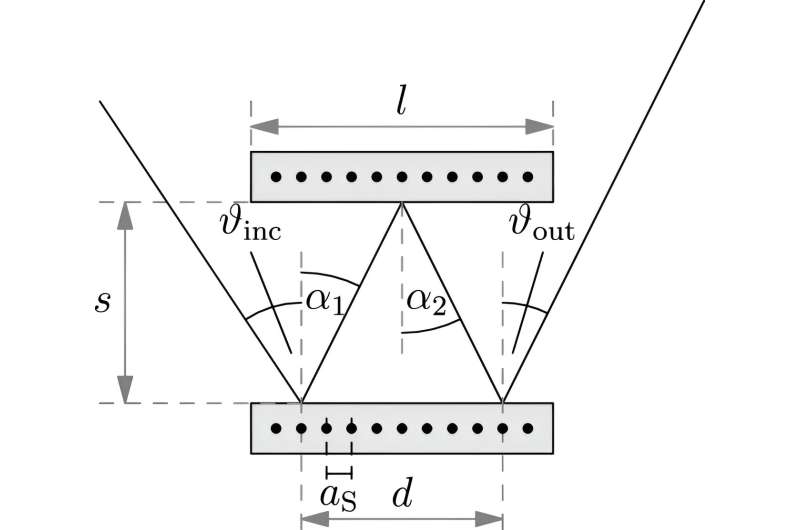This article has been reviewed according to Science X's editorial process and policies. Editors have highlighted the following attributes while ensuring the content's credibility:
fact-checked
peer-reviewed publication
trusted source
proofread
A new simple scheme for atom interferometry

Atom interferometers are devices that use the wave characteristics of matter to measure the phase between atomic matter waves to separate paths to make high-precision measurements of elements of physics, such as gravitational and magnetic fields.
Atom interferometers have also found their way into industry and are used in geological surveys, mineral exploration, environmental monitoring, and for the development of precision atomic clocks.
Atom interferometers usually control matter waves and particularly particle velocity using lasers. Thus, the growth of atom interferometer application has been strongly tied to the development of advanced laser systems, with many current models based on the construction of gratings fashioned from laser beams.
That means that an issue with these systems is the fact that they depend on the efficient operation of intricate laser systems. Additionally, while this method has achieved commendable precision, it fails slightly when considering shorter wavelengths.
In a new paper published in The European Physical Journal D, authors Johannes Fiedler and Bodil Holst, from the University of Bergen, Norway, describe the development of a continuous beam monochromator scheme that is capable of reaching enormously high-velocity purification based on atom-surface diffraction rather that the use of lasers.
The scheme proposed by the authors simplifies application in the construction of atom interferometers by reducing degrees of freedom to just one angle.
The system proposed by the duo is based on reflection atom interferometry, allows preselecting the speeds at which the matter beam moves, and allows the scheme to be tuned to a specific configuration while still allowing it to provide atom beams with high-speed ratios across a range of velocities.
The matter beam is sent through a pinhole that ensures the particles with a velocity outside a specific range will be blocked. The velocity-dependent spread of this beam is increased using three reflections, which is made possible by ensuring that the reflective surfaces do not move relative to each other.
The scheme presented by the team is currently used for a helium beam scattering off hydrogen-passivated silicon, but the authors say the proposed device can be adapted to other materials and atomic beams.
The device's simple design, allowing it to be "tuned" to a specific velocity with a fixed angle, ensures that it will be easy to handle. This could be vital to the development of portable atom gravimeters for commercial applications in geology and investigations such as prospecting and oil surveying.
More information: Johannes Fiedler et al, A continuous beam monochromator for matter waves, The European Physical Journal D (2024). DOI: 10.1140/epjd/s10053-024-00829-3
Journal information: European Physical Journal D
Provided by SciencePOD



















